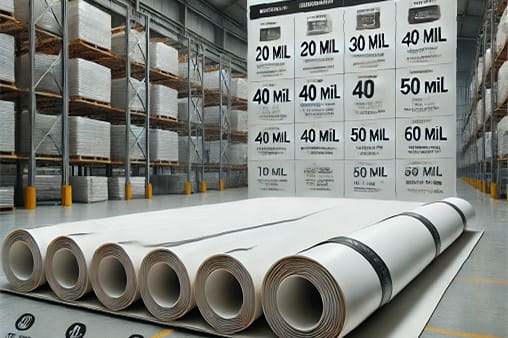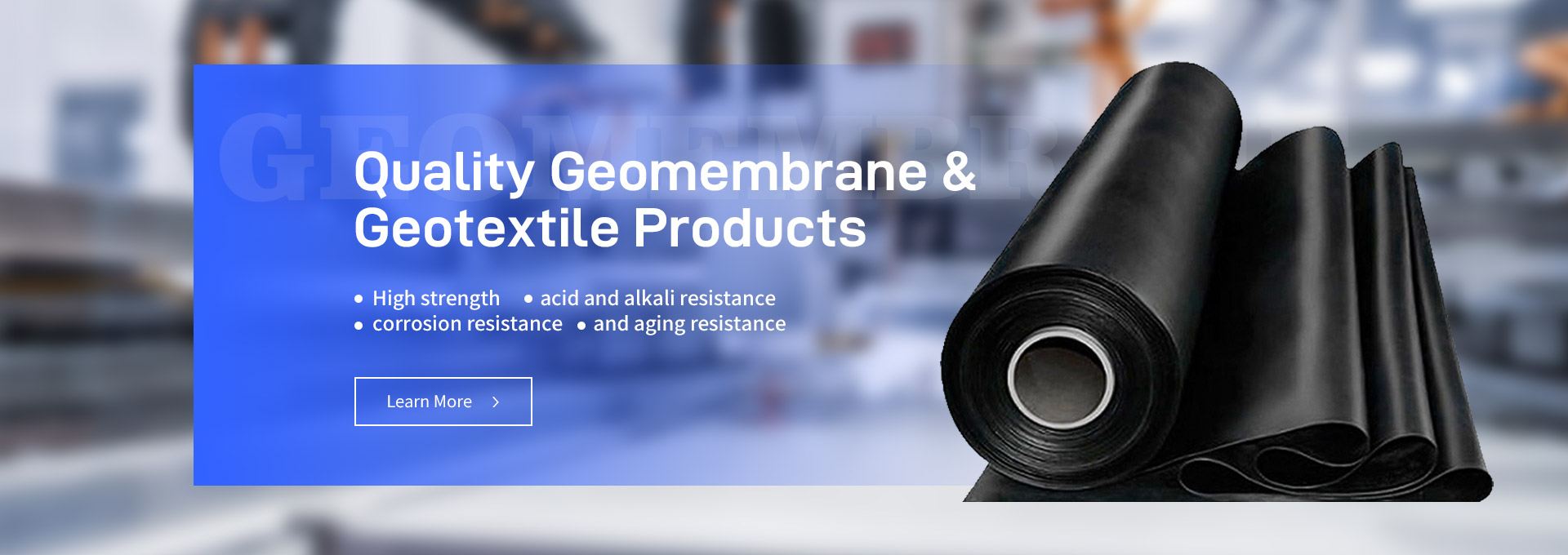Oxidation pond geomembrane plays a crucial role in modern wastewater treatment systems, serving as an essential barrier to prevent contaminants from seeping into the surrounding environment. These specialized liners are designed to withstand the harsh conditions present in oxidation ponds while maintaining their integrity and impermeability. In this blog post, we'll explore the anti-permeability performance of oxidation pond geomembranes and the various test methods used to ensure their effectiveness.

Understanding Oxidation Pond Geomembranes
Oxidation ponds, also known as waste stabilization ponds, are shallow man-made basins used for treating wastewater through natural biological processes. The effectiveness of these systems heavily relies on the quality and performance of the geomembrane lining. A high-quality geomembrane roll is essential for creating a robust and long-lasting barrier against seepage.
The primary function of an oxidation pond geomembrane is to prevent the infiltration of wastewater into the underlying soil and groundwater. This is achieved through the material's low permeability and resistance to chemical degradation. When selecting a geomembrane for an oxidation pond, factors such as material composition, thickness, and geomembrane price must be carefully considered to ensure optimal performance and cost-effectiveness.
Anti-permeability Performance
The anti-permeability performance of oxidation pond geomembranes is paramount to their functionality. These liners are typically made from materials such as high-density polyethylene (HDPE), linear low-density polyethylene (LLDPE), or polyvinyl chloride (PVC), each offering specific advantages in terms of chemical resistance, flexibility, and durability.
Key factors contributing to the anti-permeability performance of oxidation pond geomembranes include:
1. Material density: Higher density materials generally offer better resistance to permeation.
2. Thickness: Thicker geomembranes provide an increased barrier against seepage.
3. Chemical resistance: The ability to withstand prolonged exposure to various chemicals present in wastewater.
4. UV stability: Resistance to degradation from prolonged sun exposure, especially important for uncovered ponds.
5. Stress crack resistance: The ability to maintain integrity under constant stress and environmental factors.
Test Methods for Anti-permeability Performance
To ensure the reliability and effectiveness of oxidation pond geomembranes, several standardized test methods are employed to evaluate their anti-permeability performance. These tests simulate real-world conditions and stress factors that the geomembrane may encounter during its service life.
1. Hydraulic Conductivity Test (ASTM D5084)
This test measures the rate at which water passes through the geomembrane under a specific hydraulic gradient. For oxidation pond applications, extremely low hydraulic conductivity values (typically less than 1 x 10^-12 cm/s) are required to ensure effective containment.
2. Water Vapor Transmission Test (ASTM E96)
While not directly related to liquid permeability, this test evaluates the geomembrane's resistance to water vapor transmission. Lower water vapor transmission rates indicate better overall barrier properties.
3. Chemical Compatibility Testing
Oxidation pond geomembranes must withstand exposure to various chemicals present in wastewater. ASTM D5747 provides guidelines for evaluating the chemical resistance of geomembranes through immersion tests and subsequent property evaluations.
4. Multiaxial Tension Test (ASTM D5617)
This test assesses the geomembrane's ability to resist rupture under multiaxial stress conditions, simulating the pressures exerted by the contained wastewater and potential ground movements.
5. Stress Crack Resistance Test (ASTM D5397)
Particularly important for HDPE geomembranes, this test evaluates the material's resistance to slow crack growth under constant tensile stress, which is crucial for long-term performance in oxidation ponds.
Factors Affecting Anti-permeability Performance
Several factors can impact the anti-permeability performance of oxidation pond geomembranes over time:
1. Installation quality: Proper installation, including careful handling of the geomembrane roll and proper seaming techniques, is crucial for maintaining the liner's integrity.
2. Environmental stress: Exposure to UV radiation, temperature fluctuations, and biological activity can degrade the geomembrane over time.
3. Chemical attack: Prolonged exposure to certain chemicals in wastewater can potentially compromise the geomembrane's properties.
4. Mechanical stress: Ground movements, operational activities, and maintenance can induce stress on the geomembrane.
5. Age: The performance of geomembranes may decline over time, necessitating periodic evaluations and potential replacements.
Importance of Ongoing Monitoring
While initial testing and proper installation are crucial, ongoing monitoring of oxidation pond geomembranes is essential to ensure continued anti-permeability performance. Regular inspections, leak detection surveys, and periodic testing of material properties can help identify potential issues before they compromise the system's effectiveness.
Cost Considerations
When evaluating oxidation pond geomembrane options, it's important to consider both the initial geomembrane price and the long-term cost implications. While a higher upfront investment in a premium geomembrane may seem daunting, it often results in lower lifecycle costs due to improved durability, reduced maintenance requirements, and extended service life.
Factors influencing the geomembrane price include:
l Material type and quality
l Thickness and dimensions
l Customization requirements
l Quantity ordered
l Transportation costs
It's crucial to balance these cost factors with the required performance characteristics to ensure the most cost-effective solution for your oxidation pond project.
Conclusion
The anti-permeability performance of oxidation pond geomembranes is a critical factor in the effectiveness and environmental safety of wastewater treatment systems. Through rigorous testing methods and ongoing monitoring, we can ensure that these essential barriers continue to protect our water resources from contamination.
As technology advances and new materials are developed, we can expect further improvements in the anti-permeability performance of oxidation pond geomembranes. This ongoing evolution will contribute to more efficient, cost-effective, and environmentally friendly wastewater treatment solutions for communities worldwide.
By understanding the importance of anti-permeability performance and the methods used to evaluate it, stakeholders can make informed decisions when selecting and maintaining oxidation pond geomembranes, ultimately contributing to better water management practices and environmental protection.

